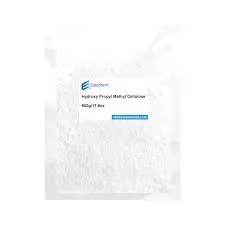
Nov . 08, 2024 22:59 Back to list
HPMC Applications in Gypsum Plaster for Enhanced Performance and Durability
HPMC for Gypsum Plaster Enhancing Performance and Usability
Hydroxypropyl Methylcellulose (HPMC) has become a vital additive in the formulation of gypsum plaster, significantly enhancing its performance and usability. As the construction industry increasingly demands high-quality, durable, and user-friendly materials, HPMC serves as a multifunctional ingredient that plays a critical role in the production of gypsum plaster. This article delves into the benefits, properties, and applications of HPMC in gypsum plaster.
What is HPMC?
Hydroxypropyl Methylcellulose is a non-ionic, water-soluble cellulose ether derived from natural cellulose. It is widely used in various industries, including food, pharmaceuticals, and construction, due to its thickening, binding, and stabilizing properties. In the context of gypsum plaster, HPMC is utilized to improve application characteristics, enhance workability, and provide better adhesion to surfaces.
Benefits of HPMC in Gypsum Plaster
1. Improved Workability One of the most significant advantages of including HPMC in gypsum plaster is the enhancement of its workability. It allows for a smoother application and better handling, making it easier for construction workers to apply the plaster uniformly on surfaces. HPMC reduces friction during application, which is particularly beneficial when working on large wall areas.
2. Extended Open Time HPMC helps prolong the open time of gypsum plaster. This means that the mortar can remain workable for a more extended period after mixing, giving applicators ample time to spread and finish the material without the rush often associated with quick-setting products. The extended open time is especially advantageous in warmer climates, where evaporation rates are higher.
3. Improved Adhesion Adhesion is a critical factor in plaster applications. HPMC enhances the bonding properties of gypsum plaster, ensuring that it adheres well to various substrates, such as concrete, brick, and even previously plastered surfaces. This improved adhesion reduces the likelihood of cracking and peeling over time, contributing to the durability of the finish.
hpmc for gypsum plaster

4. Water Retention The water-retention capability of HPMC is another essential property that benefits gypsum plaster. It helps maintain moisture in the mixture for a longer duration, which is crucial for proper curing. Adequate moisture is necessary to achieve the desired strength and hardness in the final product. Increased water retention also minimizes shrinkage cracks, which are common issues in plaster applications.
5. Enhanced Flexibility HPMC provides increased flexibility to gypsum plaster, reducing the risk of cracks due to thermal expansion and contraction. This flexibility is particularly important in regions with significant temperature fluctuations. The incorporation of HPMC allows the plaster to accommodate slight movements in the substrate without compromising the integrity of the finish.
6. Eco-Friendly and Non-Toxic Being derived from natural cellulose, HPMC is an environmentally friendly and non-toxic additive. Its use in gypsum plaster aligns with the growing demand for sustainable building materials, making it an attractive option for eco-conscious builders and clients.
Applications of HPMC-Enhanced Gypsum Plaster
HPMC-enhanced gypsum plaster is commonly used in a variety of applications, including
- Interior Wall Finishes It provides a smooth and aesthetically pleasing surface for interior walls, suitable for painting or wallpaper application. - Ceiling Coatings The enhanced workability and adhesion properties make it ideal for ceiling plastering, where application precision is essential. - Repair Works Its flexibility and excellent adhesion make HPMC-based gypsum plaster a perfect choice for repairing damaged walls and ceilings. - Commercial and Residential Construction HPMC formulations are extensively used in both residential and commercial projects, providing a reliable solution for high-performance plaster systems.
In conclusion, the integration of HPMC into gypsum plaster formulations offers numerous benefits that significantly enhance the material’s performance. Its ability to improve workability, extend open time, increase adhesion, retain water, and add flexibility makes it a valuable additive in construction. As the demand for high-quality plaster materials continues to grow, HPMC will likely remain a key player in the advancement of gypsum plaster technology, contributing to more sustainable and durable building solutions.
-
Versatile Hpmc Uses in Different Industries
NewsJun.19,2025
-
Redispersible Powder's Role in Enhancing Durability of Construction Products
NewsJun.19,2025
-
Hydroxyethyl Cellulose Applications Driving Green Industrial Processes
NewsJun.19,2025
-
Exploring Different Redispersible Polymer Powder
NewsJun.19,2025
-
Choosing the Right Mortar Bonding Agent
NewsJun.19,2025
-
Applications and Significance of China Hpmc in Modern Industries
NewsJun.19,2025







